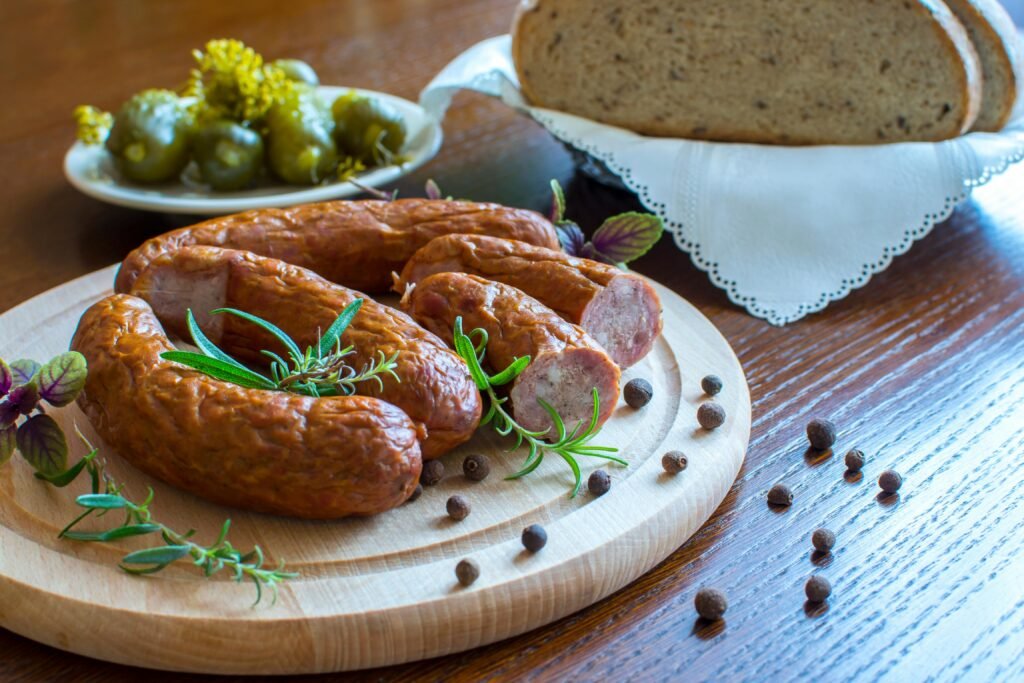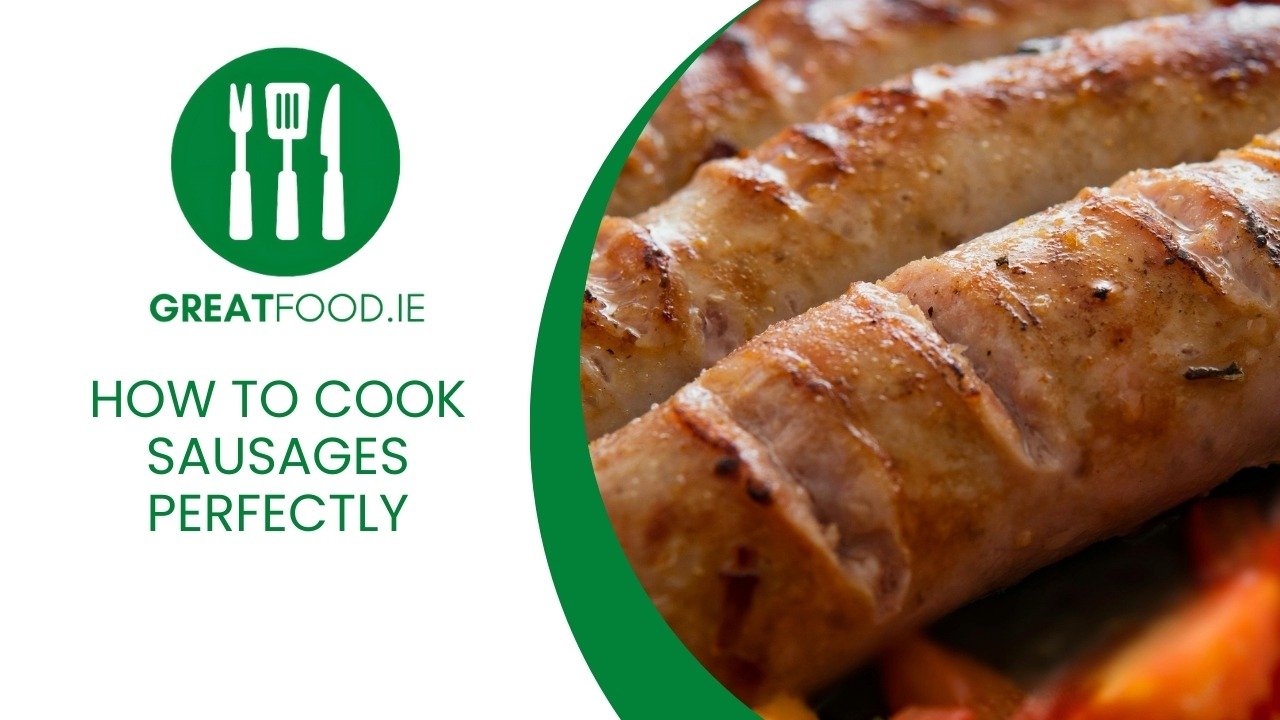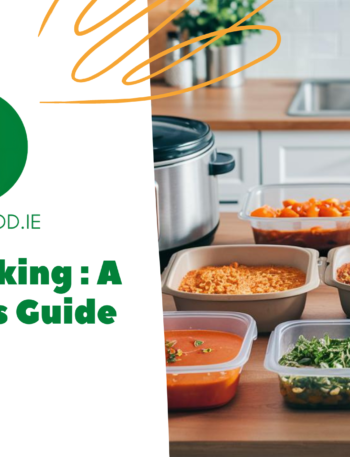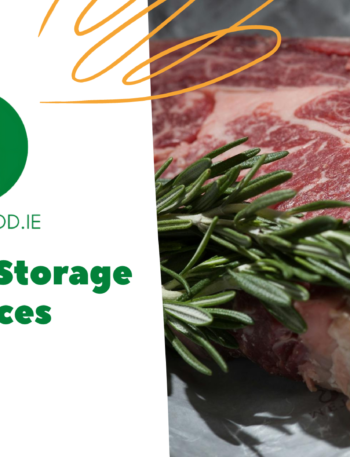How to cook sausages to perfection can be tricky, with common pitfalls like charred exteriors and raw centers, split casings, or dried-out meat. However, by using the right techniques such as a gentle simmer followed by a quick sear, or baking and grilling methods, you can achieve deliciously juicy, evenly cooked sausages every time.
Savoring Ireland’s Sausage Tradition
Sausages are an integral part of Irish cuisine, with a rich history dating back centuries. Traditional Irish sausages, also known as “bangers,” are typically made from pork and feature a distinct blend of spices and herbs that set them apart from other European sausages. The popularity of Irish sausages can be attributed to their versatility – they can be enjoyed as part of a hearty breakfast, as a main course for lunch or dinner, or even as a tasty snack.
To truly appreciate the flavors and textures of Irish sausages, it’s essential to understand the various cooking methods that can be employed. Different cooking techniques can yield vastly different results, from crispy, caramelized exteriors to juicy, tender interiors. Mastering these cooking methods allows you to create the perfect sausage experience tailored to your preferences.
Whether you prefer the smoky char of grilled sausages, the comforting simplicity of pan-fried bangers, or the hands-off convenience of oven-baked sausages, each method has its merits. By exploring these diverse cooking techniques, you can unlock the full potential of Irish sausages and elevate your culinary repertoire.

Sausage and Pairing Guide
Here is a table summarizing some popular types of sausages and the flavors they pair well with:
The key to successful sausage pairings is to consider the dominant flavors in the sausage and choose accompaniments that will complement or contrast those flavors. For example, bratwurst has a mild flavor that pairs well with the acidity of sauerkraut or the sweetness of caramelized onions, while spicy chorizo benefits from cooling, fruity salsas.Mustard is a classic condiment for many sausages, but the type of mustard should be matched to the sausage. Milder sausages like bratwurst pair well with sweet mustards, while hot Italian sausages can stand up to spicier mustards.Ultimately, the best pairings depend on personal taste, so don’t be afraid to experiment with different flavor combinations to find your ideal match. By understanding the key flavors in each type of sausage, you can create delicious and harmonious pairings.
The Ultimate Guide on How to Cook Sausages
How to Cook Sausages: Methods & Tips
There are several popular methods for cooking sausages, each with its own advantages. Proper cooking is crucial to ensure food safety and to bring out the best flavors and textures in the sausages.
Boiling
- Method: Simmer sausages in water for about 10 minutes if pre-cooked, or 30 minutes if raw.
- Benefits: Helps cook them evenly throughout.
Baking
- Method: Bake sausages in the oven at 200°C (400°F) for 20-30 minutes, flipping halfway through for even cooking.
- Benefits: Makes them crispy and brown with less mess.
Pan-frying
- Method: Fry sausages on medium-low heat with a little oil, turning regularly until browned and cooked through.
- Benefits: Creates a crispy exterior and enhances umami flavor.
Grilling/Broiling
- Method: Cook sausages on a hot grill or under the broiler, flipping often, for about 10 minutes until done.
- Benefits: Imparts a smoky flavor.
Poaching
- Method: Simmer sausages in water for 10 minutes before grilling or frying to reduce cooking time and keep them moist.
- Benefits: Prevents drying out.
Air Frying
- Method: Air fry sausages at 200°C (400°F) for 12-15 minutes.
- Benefits: Healthier alternative that preserves flavor.
How to Fry Sausages to Perfection
- Heat a heavy-bottomed pan like a cast-iron skillet over medium heat and add a small amount of oil or butter. Let the pan get hot before adding the sausages.
- If the sausages are linked together, cut the casings to separate them. You can also slice the sausages into smaller pieces to increase the surface area for browning.
- Place the sausages in the hot pan, making sure to leave some space between each one. The sausages should sizzle when they hit the pan.
- Fry the sausages for about 12-15 minutes total, turning them occasionally with tongs, until they are evenly browned and cooked through.
- To ensure the sausages are fully cooked, use a meat thermometer to check that the internal temperature has reached 71°C (160°F) for pork sausages.
- If the sausages are thick and you’re worried about them burning before being cooked through, you can add a half cup of water to the pan and cover with a lid to finish cooking them with steam.
- Once done, let the sausages rest for a few minutes before serving to allow the juices to redistribute.
Bake Sausages to Perfection
- Preheat the oven to 200°C (400°F) and line a baking tray with parchment paper or foil.
- Place the sausages on the prepared tray, spacing them evenly apart. Use a knife to prick a small hole in each sausage to allow fat to escape during cooking.
- Bake for 20-30 minutes, flipping the sausages halfway through for even browning. Thin sausages take about 20 minutes while thicker ones need closer to 30 minutes.
- The sausages are done when they reach an internal temperature of 74°C (165°F). Let rest a few minutes before serving.
Comparing Sausage Cooking Methods
Each cooking method has its own advantages and is best suited for different types of sausages or desired results:
- Pan-frying: Draws out the fat to create a crispy exterior and enhances umami flavor. Use medium heat and turn regularly for even cooking.
- Oven baking: A low-maintenance method that requires less fat than frying. Baking at 200°C (400°F) for 20-30 minutes yields a nicely browned exterior with minimal mess.
- Grilling/broiling: Imparts a smoky flavor. Grill over indirect heat for 10 minutes per side, then finish over direct heat for color.
- Boiling: Helps prevent sausages from drying out. Boil in water or flavorful liquids like beer for 10-30 minutes depending on if the sausage is fresh or pre-cooked.
- Air frying: A trendy, energy-efficient method that creates a crispy exterior similar to deep frying but with less oil.

Oven Sausage Cooking Times
Cooking sausages in the oven at 200°C (400°F) is a simple and effective method. The cooking time will vary based on the size and type of sausage.
| Sausage Type | Cooking Time at 200°C/400°F |
|---|---|
| Small breakfast sausage links | 15-20 minutes |
| Italian sausage or bratwurst | 30 minutes |
| Fresh, average-sized sausages | 25-35 minutes |
| Frozen sausages | Add 5-10 minutes |
Frying Times for Sausages
Here is a helpful table summarizing the recommended cooking times for frying different types of sausages:
| Sausage Type | Frying Time |
|---|---|
| Small breakfast links | 12-16 minutes |
| Standard fresh sausages | 15-20 minutes |
| Thick fresh sausages | Up to 30 minutes on low heat |
| Pre-cooked sausages | 10-15 minutes |
The cooking time for frying sausages depends on factors like the size and thickness of the sausages, as well as whether they are fresh or pre-cooked. In general, smaller and thinner sausages will cook more quickly than larger, thicker ones. Fresh sausages also typically take longer to cook through than pre-cooked varieties.To ensure sausages are cooked safely, use a meat thermometer to check that they have reached an internal temperature of 71°C (160°F) for pork sausages or 74°C (165°F) for poultry sausages. Slicing the sausages can also help them cook more quickly and evenly.
Air Fryer Sausage Cooking Times
Air frying is a quick and convenient way to cook sausages to crispy perfection. Here is a table summarizing the recommended air frying times for various types of sausages:
The cooking time may need to be adjusted slightly depending on the specific thickness of the sausages and the model of air fryer used. Flipping the sausages halfway through the cooking time helps ensure even browning and cooking.To check that the sausages are fully cooked, use a meat thermometer to verify they have reached a safe internal temperature of 71°C (160°F ). Let the sausages rest for a few minutes before serving to allow the juices to redistribute.
Reheating Sausages Safely
- Refrigerate leftover cooked sausages promptly and use within 3-4 days for best quality and safety.
- Reheat sausages until they reach an internal temperature of 74°C (165°F) to ensure they are safe to eat.
Best Methods for Reheating Sausages:
- Oven: Place sausages on a baking sheet and cover with foil to retain moisture. Heat at 175°C (350°F) for 10-15 minutes.
- Microwave: Arrange sausages on a microwave-safe plate and cover with a damp paper towel. Microwave on high for 30-60 seconds at a time until heated through.
- Skillet: Reheat sausages over medium-low heat, adding a splash of water to the pan and covering with a lid to steam them as they reheat.
Common Sausage Questions Answered
- What is the best type of meat for making sausages? Pork is the most common meat used in sausages due to its fat content and flavor, but different types of sausages can be made with various meats like beef, chicken, or turkey.
- Are there any preservatives or MSG in sausages? While it varies by brand, many sausages do not contain preservatives, antioxidants, or MSG.
- How long do sausages stay fresh? If unopened, fresh sausages last until the sell-by date in the fridge. After opening, they should be used within 1-2 days. Cooked sausages can be stored in the fridge for 3-4 days.
- What’s the best way to cook sausages? There are many ways to cook sausages, and the best method depends on the type of sausage and your personal preferences.
- Are sausages gluten-free? Many sausages are naturally gluten-free, but it’s important to check the ingredients.
Discover Your Ideal Sausage
In conclusion, cooking sausages to perfection is an art that can be mastered by understanding the various methods available and the factors that affect the final result. Whether you prefer the crispy exterior achieved by pan-frying, the smoky flavor of grilled sausages, or the hands-off convenience of oven baking, each technique has its merits.
The key to success lies in monitoring the internal temperature of the sausages to ensure they reach a safe level of doneness without overcooking and drying them out. Factors such as the size and type of sausage, as well as variations in cooking equipment, can all impact the cooking time, so it’s essential to remain attentive and adjust accordingly.
Ultimately, the best way to cook sausages is the method that aligns with your personal taste preferences and cooking style. Don’t be afraid to experiment with different techniques, seasonings, and accompaniments to discover your ideal sausage preparation. Whether you’re a fan of juicy, tender oven-baked sausages or the satisfying sizzle of a pan-fried banger, the versatility of this beloved ingredient guarantees that there’s a perfect cooking method for everyone.
See our recipes here
Additional Resources
Here are some helpful resources for learning more about making sausages at home:
- Home Made Sausage Guide Resource – This comprehensive guide covers the basics of homemade sausage making, including equipment, ingredients, techniques, and recipes. It provides tips on selecting the right cuts of meat, using salt and spices effectively, and troubleshooting common issues.
- Sausage Making Basics – This overview of the fundamentals of sausage making emphasizes the importance of proper equipment, food safety practices, and key techniques. It offers advice on grinding meat, mixing ingredients, and stuffing sausages for optimal results.
- The Art and Practice of Sausage Making – This detailed resource from North Dakota State University Extension delves into the science and craft of sausage making. It explains the role of ingredients, the nutritional value of sausages, and the steps involved in producing high-quality homemade sausages.
- Len Poli’s Sausage Making Website – Recommended by sausage enthusiasts on Reddit, Len Poli’s website is a treasure trove of recipes, methods, and tips for making a wide variety of sausages at home. His extensive experience and passion for the craft make this an invaluable resource for both beginners and seasoned sausage makers.
By exploring these resources and experimenting with different techniques, you can develop the skills and knowledge needed to create delicious, homemade sausages tailored to your taste preferences.
Yum











